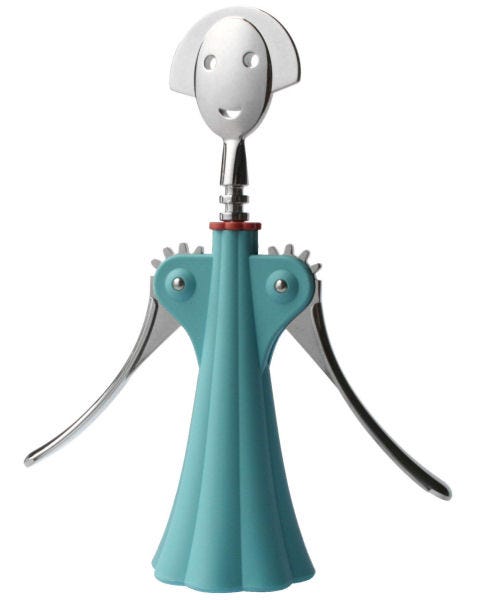#49 Why is your design going nowhere?
...and a characterful corkscrew 🎉
Happy New Year from Design Lobster! We’re kicking off 2021 with some organisational psychology and a corkscrew with soul. Cheers! 🍾
✨Enjoying Design Lobster? Please share it with a friend, colleague or fellow designer.
Question: What is Conway’s Law?

Have you ever been frustrated that the company you work for seems doomed to create designs that don’t truly solve the problems they set out to? Many designers, particularly those working with larger companies often find that organisational boundaries limit their ability to create a good experience because it’s simply not possible to bring different groups together to deliver it. In 1968 Mel Conway wrote a paper called How do Committees Invent? that addressed this very problem. He identified a direct relationship between the way companies are organised and the way they design systems. In his words:
Organizations which design systems are constrained to produce designs which are copies of the communication structures of these organizations.
– Melvin Conway, 1967
Much of the progress in the previous decade in the user experience of software can arguably be attributed to changes in the organisational structure of the companies designing it. The trend away from large separate company functions (marketing/engineering/sales etc) to smaller cross-functional teams that have everything they need to address a specific problem stems directly from Conway’s insights. It’s also one of the reasons why tiny startups are credited with being able to achieve so much, lacking the complex communication structures of larger companies that can slow them down.
So take heart if your seemingly brilliant design work seems to be progressing slowly, it’s possible that design changes are more urgently needed to the organisation around you.
Design takeaway: Which parts of your organisation’s structure are holding your design back?
🎧 Peter Merholz, one of the founders of Adaptive Path goes deep on how organisation structure impacts design work in this podcast.
Object: Anna G Corkscrew
When opening a bottle of wine or two over the festive period, you might have noticed the anthropomorphic qualities of the corkscrew in your hands. For Italian designer Alesandro Mendini, watching the arms of the corkscrew slowly rise like a ballet dancer’s as his grandmother turned the screw was a treasured childhood memory. In homage to that, he worked with Alessi in 1994 on a corkscrew design that overtly emphasised the human qualities of the object.
In fact, the bob haircut, long neck and pleated dress refer to one specific woman, a fellow designer and friend of Mendini called Anna Gili. She gives the corkscrew its name – Anna G. For me, there’s something about the expression of the “face” of the corkscrew that is particularly charming – at once trusting, compliant and kind. It’s hard to think of a way to make a tool look more willing to help you.
Design takeaway: What memories can you channel to bring more character to your design work in 2021?
🎤Marcus Fairs interviewed Mendini in 2015 - read the conversation here
Quote: “A chair is the first thing you need when you don’t really need anything, and is therefore a peculiarly compelling symbol of civilization.
For it is civilization, not survival, that requires design.”
— Ralph Caplan
Ralph Caplan was a brilliant design critic and one-time editor of ID Magazine who sadly died in June 2020. This quote comes from this humorous 1979 essay about chairs where he presents design as a symbolic attribute of civilisation. Ralph wrote about Civil Rights Movement sit-ins as well as the usual “capital D” Design and believed that design wasn’t just about artefacts but about doing the right thing. I’m with him on that.
Keep discovering in 2021,
Ben 🦞
Enjoyed this week’s Design Lobster? Let me know by clicking the heart button.
👇


